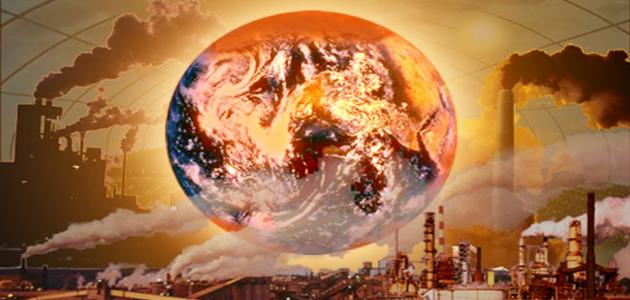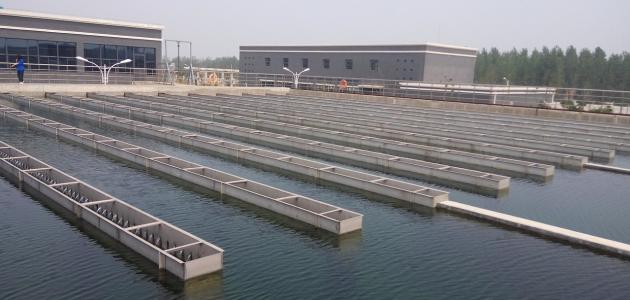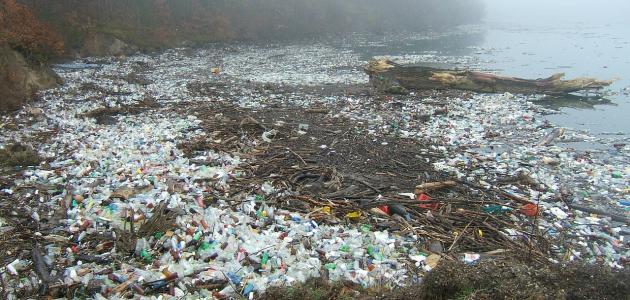Solutions to the problem of air pollution
Air pollution is one of the major problems that threaten human life. In addition to being one of the main causes of many diseases, it is responsible for 9% of all deaths globally, or about 5 million people annually, and a large percentage of them are concentrated in low- and middle-income countries, in varying proportions. From one country to another, as a result of the global efforts made to solve the problem of air pollution, it has been observed that the death rate recorded globally has decreased by addressing the problem of air pollution inside homes and establishments.
Individual solutions to the problem of air pollution
More efforts must be made at many levels to reduce the problem of air pollution. Below are some suggestions that can be practiced at the individual level to reduce this phenomenon:
- Use public transportation, bike, or walk whenever possible.
- Purchase energy-efficient home or office equipment that has the Energy Star label.
- Follow instructions for refilling fuel in vehicles; Make sure that fuel does not spill out of the filling hole, and close the fuel filling hole tightly.
- Purchase spill-resistant portable gasoline containers if possible.
- Use natural compost or mulch.
- Use gas fireplaces instead of wood burning ones.
- Participate in programs held by local authorities concerned with energy conservation.
- Reducing the number of times you use the vehicle by purchasing necessities in one go.
- Avoid driving at very slow speeds; Because this will consume large amounts of fuel for a certain distance, compared to traveling the same distance at normal speed.
- Regular vehicle maintenance, such as: changing the oil and filter, and ensuring that tires are well inflated; To avoid consuming more fuel while driving a certain distance, it can be traveled with less fuel if the vehicle is well maintained.
- Acquisition of electric or hybrid cars.
- Use manual or electric farming tools that do not depend on fuel.
- Use the electric washing machine when full of clothes, and use the dishwasher when full of cooking utensils; To reduce the number of times of use, and reduce electricity consumption.
- Use environmentally friendly cleaning materials.
- Use paints that contain a low percentage of volatile organic compounds, or paints that are water-based instead of solvents.
- Advocating efforts to reduce emissions from power plants, and supporting the application of more stringent international standards on emissions from vehicles.
- Encouraging government-funded research projects based on developing electric transportation to reduce vehicles that rely on the combustion of fossil fuels to operate.
- Encouraging the development of clean, renewable and environmentally friendly alternative energy sources, to reduce the use of fossil fuels.
- Applying the Carbon Credit System to pollutants, such as: sulfur oxide, nitrogen oxide, carbon monoxide, and methane. To reduce the percentage of pollutants allowed into the atmosphere annually.
- Replace LED lamps with fluorescent and incandescent lamps, as they are 50% more efficient than fluorescent lamps, and 90% more efficient than incandescent lamps.
Collective solutions to the problem of air pollution
It is possible to solve the problem of air pollution through some collective solutions, such as the following:
Read also:Preventive measures to maintain the integrity of the atmosphere- Creating a safer environment and places for cycling: Bicycles are manual vehicles that do not depend at all on fuel combustion, so strategies must be developed that encourage vehicle owners to use them to reduce the emission of nitrogen oxides and ozone into the atmosphere. According to some studies, if about 14% of all movements are carried out using bicycles instead of vehicles The percentage of nitrogen oxides in the atmosphere will decrease by one-third, the percentage of traffic congestion in the streets will decrease, and harmful emissions into the air resulting from vehicles will decrease.
- Converting public transportation to electric-powered vehicles: Most current means of transportation operate on diesel, which contributes to the emission of large proportions of nitrogen oxides and small particles. Therefore, some countries are currently working to supply the transportation sector with hybrid buses that operate on diesel and electricity, and it is expected that the percentage of fuel consumption and emissions will decrease by 40%.
- Converting private transportation into electric-powered vehicles: Private gasoline-powered vehicles increase the emission of carbon dioxide and greenhouse gases into the atmosphere, and now there is a trend towards using electric-powered vehicles to reduce the emission of these gases.
- Environmental interventions: It has been observed that urban areas suffer more than other areas from air pollution, as a result of the high number of people within the area, the high rate of traffic density, and high-rise buildings that contribute to trapping pollutants and preventing their dispersal in the air. Therefore, one of the proposed solutions to solve this problem is to turn to agriculture. Plants growing vertically can reduce NOx levels by up to 40% and particulate matter by up to 60%; This is because vegetation provides a suitable surface for pollutants to accumulate on, and plants are also a filter to purify the air from some gases such as carbon dioxide, so it is recommended to plant them in places separating main roads from buildings.
- Resorting to the use of renewable energy sources: Switching to using renewable energy, such as: solar energy, wind energy, and geothermal energy as an alternative to fossil fuels is one of the best solutions used to get rid of air pollution.
- Society adopts new customs: Such as resorting to using more efficient devices that contribute to reducing energy consumption.
- Activating the green building principle: By resorting to constructing environmentally friendly and efficient buildings that reduce energy use, in order to reduce carbon emissions.
- Enacting laws and legislation to reduce pollution: This is in industrialized countries that require the use of scrubbers in all their industrial facilities, which are responsible for emitting pollutants into the atmosphere.
International efforts to reduce the problem of air pollution
Governments in many countries are making great efforts to solve the environmental problems they face, such as: the problem of acid rain, global warming, the ozone hole, and others. These governments are developing many plans aimed at reducing the amount of greenhouse gases resulting from various human activities, and among these plans are: Come:
Read also:musk lake- Aichi Biodiversity Targets Convention: (in English: Aichi Biodiversity Targets), which is an agreement affiliated with the Convention on Biological Diversity, and aims primarily to protect global biological diversity, and the eighth goal in it is centered around reducing pollutants, such as controlling the proportion of nutrients in excess of the need within levels that do not harm the ecosystem and biological diversity in general. 2020 AD.
- ASEAN Agreement on Transboundary Haze Pollution: (In English: Association of Southeast Asian Nations (ASEAN) Agreement on Transboundary Haze Pollution), which includes 10 countries that have agreed among themselves to confront problems related to haze pollution that moves between countries, resulting from forest and land fires.
- Convention on Long-range Transboundary Air Pollution: (in English: Convention on Long-Range Transboundary Air Pollution), for short (CLRTAP), consists of 8 protocols to control the levels of pollutants in the atmosphere, such as: sulfur, nitrogen oxide, persistent organic pollutants, volatile organic compounds, ammonia, and toxic heavy metals. The Gothenburg Protocol was developed in 1999 as one of these protocols. It stipulates reducing the levels of acids, excess nutrients, and levels of ozone near the Earth’s surface, in addition to setting several strict goals to control the levels of sulfur dioxide, nitrogen oxides, and volatile organic compounds. And ammonia.
- European Union Directives for Air Quality, which issued a number of legislation that sets standards and health goals related to the proportions of pollutants in the atmosphere, including sulfur dioxide and nitrogen dioxide.
- MARPOL Convention: (in English: International Convention for the Prevention of Marine Pollution from Ships) for short (MARPOL), which is an international agreement that aims to prevent marine air pollution resulting from ships, where Appendix VI specifies the permissible percentages for emissions of sulfur oxides and nitrous oxides resulting from ship exhausts, The Annex completely prohibits ozone-depleting emissions.
- Border air quality strategy between the United States and Canada: (In English: Canada-US Border Air Quality Strategy), the two countries have jointly completed three projects, including the establishment of experimental sites in the atmosphere to study the effects of air on human health.
- Air Quality Agreement between Canada and the United States of America: (in English: US-Canada Air Quality Agreement) It was established in 1991 AD to monitor air pollution on the border between the two countries, and another annex dealing with ozone was added in 2000 AD to address smog emissions on the border between the two countries.
Devices used to filter pollutants from the air
There are many devices used in factories and public and private transportation to control air pollution, which contribute to destroying pollutants emitted or removing them from the exhaust before they mix with the atmosphere. These devices include:
Read also:Causes of food contamination- Particle control, and the devices used in this include:
- Mechanical complexes such as: (Dust Cyclones) and (Dust Multi Cyclones).
- Electrostatic precipitators.
- Baghouses.
- Particle scrubber.
- Gas scrubbers (in English: scrubbers), examples of which include:
- Baffle Spray Scrubber device.
- Cyclonic Spray Scrubber device.
- Ejector Venturi Scrubber device.
- Mechanically Aided Scrubber device.
- Device (in English: Spray Tower).
- Wet scrubber.
- Devices that control nitrogen oxide levels, such as:
- Low NOx Burners device.
- Selective Catalytic Reduction (SCR) device.
- Selective Non-catalytic Reduction (SNCR) device for short.
- Nitrogen oxides scrubber (in English: NOx Scrubber).
- Exhaust gas recirculation device.
- Catalytic converter.
- VOC reduction devices, such as:
- Adsorption systems, such as activated carbon.
- Flares.
- Thermal oxidizers.
- Catalytic oxidizers.
- Biological filters.
- Absorption washing.
- Cryogenic condensers.
- Vapor recovery systems.
- Control of acid gases and sulfur dioxide, through:
- Wet scrubber.
- Dry scrubber.
- Flue gas desulfurization devices.
- Mercury control devices through:
- Sorbent Injection Technology.
- Electro-catalytic oxidation (ECO) for short.
- Dioxin and furan control devices.
- Various associated equipment, examples of which include:
- Source capture systems.
- Continuous Emissions Monitoring Systems (CEMS) for short.









